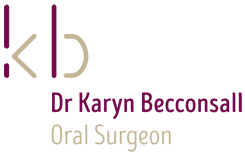Bone Grafting
Once a tooth has been extracted, the bone that used to hold the tooth in place disappears. This often means that there is a lack of bone volume in which dental implants can be placed. Today, we have the ability to grow bone where needed. This not only gives us the opportunity to place implants of proper length and width, it also gives us a chance to restore functionality and aesthetic appearance.
Bone grafting can repair implant sites with inadequate bone structure due to previous extractions, gum disease or injuries. The bone is either obtained from your own bone taken from the jaw, or from commercially available preparations. Sinus bone grafts are also performed to replace bone in the posterior upper jaw. In addition, special membranes may be utilized that dissolve under the gum and protect the bone graft and encourage bone regeneration.
Socket Preservation
When a tooth has been extracted the socket will begin to collapse and bone that an implant can be placed into will be lost. Once bone is lost it needs to be restored to its pre-extraction volume before an implant can be placed.
The aim of socket preservation is to maintain the height and width of the bony socket once a tooth has been extracted. Socket Preservation is done at the time of tooth removal The socket is packed with commercially available bone and covered with a collagen membrane. Usually implants can be placed 5 months later once the socket and the bone has healed.
Socket preservation also gives you time to make decisions as it halts the loss of bone. If you are unsure about a dental implant but may want one in the future then preserving the socket in this manner can minimize bone loss and make the placement of dental implants easier when the time comes.
Sinus Lift
The maxillary sinuses are just above the roots of the upper back teeth. These sinuses are empty, air-filled spaces. Some of the roots of the natural upper teeth extend up into the maxillary sinuses. When these upper teeth are removed, there is often not enough height of bone in which to place implants. The aim of a sinus lift is to grow bone on the floor of the maxillary sinus. This increases the height of bone in which implants can be placed. A sinus lift is one of the most common bone grafting procedures for patients with bone loss in the upper jaw.
